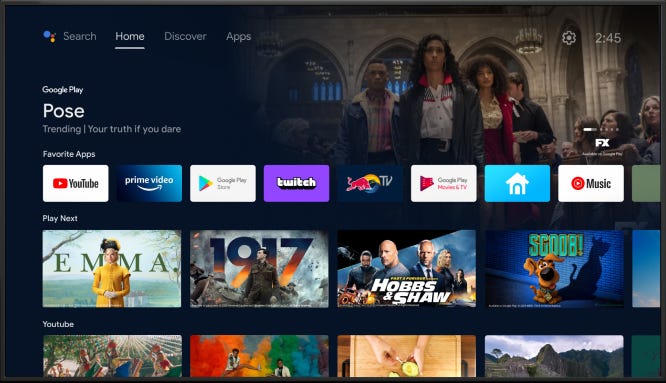Since August 5, 2020 (decree № 2020–983), segmented advertising has been authorized on television in France, meaning that TV channels have the possibility to address different advertising messages to their viewers. In other words, you might not see the same commercial breaks as your neighbor anymore.
We, at frog France, had the opportunity to work with a tech leader and a French Internet service provider (ISP) to start rolling out Addressable TV by the end of 2021.
Partnership
The software architecture relies on two main components:
- The first one is the Software Development Kit (SDK), which handles replacement opportunities for advertising messages.
- The second one is the client app, which communicates with the SDK and displays the actual television content.
We developed the SDK along with the tech leader, while the ISP developed the client app. The whole software will run on their set-top-box (STB) powered by Android TV.

Overview
Internet Protocol television (IPTV) is the delivery of television content over Internet Protocol (IP) networks. Such content is encapsulated in MPEG transport stream (MPEG-TS) which contains audio and video but also metadata.
Digital Program Insertion Cueing Message for Cable (SCTE-35) is a standard that describes the inline insertion of cue tones in MPEG-TS streams.
Digital Video Ad Serving Template (VAST) and Digital Video Multiple Ad Playlist (VMAP) are standards that present video ads using Extensible Markup Language (XML).
Based on these standards, the Syndicat National de la Publicité Télévisée (SNPTV) and the Association Française du Multimédia Mobile (AFMM) defined the Addressable TV guidelines.
First, the client app plays the audio and video encapsulated in MPEG-TS streams and forwards the metadata to the SDK. Then, the SDK parses these metadata and sends HTTP requests to an ad server when it detects replacement opportunities, as described in the SCTE-35 standard. The ad server responds with a list of video ads, as described in the VAST and VMAP standards. Finally, the SDK forwards these videos to the client app so that they can be played, replacing the original advertising message with a segmented advertising message.
Similar to the Google Play services, the SDK is a background service on which the client app is bound. It is designed with the Android Interface Definition Language (AIDL) in order to communicate with each other using interprocess communication (IPC).

The lifecycle for a service that is started and also allows binding
Job Offers
Privacy
To protect user privacy, it is a best practice for all Android apps to work with user-resettable identifiers. One such identifier is the advertising ID, which uniquely identifies a particular user for advertising use cases, such as ad personalization:
| val advertisingId = AdvertisingIdClient.getAdvertisingIdInfo(this).id | |
| // Do something with the advertising ID. |
Like many other apps, the SDK relies on this advertising ID, which is sent to the ad server to obtain personalized video ads.
The SDK is also protected by signature permissions so that only the client app can communicate with it.
Please note that Addressable TV is compliant with the General Data Protection Regulation (GDPR). Indeed, the advertising ID will never be collected without viewer consent.
Opportunities
For advertisers, this is an opportunity to reach their audiences more efficiently. For instance, a company could have different advertising campaigns based on their viewers location.
For operators, this is an opportunity to work with more advertisers. For instance, a company that could not afford an advertising campaign for all viewers would now be able to start with a subset of viewers.
Finally, this is an opportunity for the viewer who has given their consent to see more relevant advertising messages, reducing annoying commercial breaks.
With viewers spending more time than ever watching TV, now is the perfect time to get started with Addressable TV. So, lean back in your sofa and get ready for Addressable TV coming soon!
Thanks to Endale Manga-Akwa.








